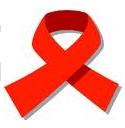A new White House strategy for fighting AIDS domestically will focus on preventing the spread of the virus, perhaps with the broader use of drugs and testing but also with a campaign to reduce stigma.Obama administration officials will release the strategy on Tuesday and said it would focus on prevention, care and reducing disparities.”The plan will serve as a roadmap for policymakers, partners in prevention, and the public on steps the United States must take to lower HIV incidence, get people living with HIV into care, and reduce HIV-related health disparities,” the White House said in a statement on Monday.AIDS advocates predicted the program would not have funding to buy drugs or tests. Obama’s initiative to fight childhood obesity, released in May, included 70 recommendations but no funding.More than 1.1 million people in the United States are infected with the human immunodeficiency virus that causes AIDS, according to the Centers for Disease Control and Prevention, with 56,000 new infections over the past decade.
While only about 5 percent of patients infect someone else, this is enough to keep levels of the virus stable in the United States, the CDC says. The fatal and incurable virus is spread during sex, in blood and breast milk and by contaminated needles.The U.S. government has a program to fight AIDS globally — PEPFAR or President’s Emergency Plan for AIDS Relief — but there has not been a similar coherent domestic strategy.
While the administration of former president George W. Bush was praised for coming up with PEPFAR, it was widely criticized for promoting abstinence-only education in place of more comprehensive programs stressing condom use. AIDS groups said they hoped the Obama plan would do more to promote such education.
“The National HIV/AIDS Strategy is a comprehensive plan focused on: 1) reducing the number of people who become infected with HIV, 2) increasing access to care and optimizing health outcomes for people living with HIV, and 3) reducing HIV-related health disparities,” the White House said.Experts have disagreed on how best to do this but recent studies have supported theories that treating HIV patients with drugs can not only keep them healthier, but help reduce the likelihood that they will infect someone else.
Some AIDS activist groups began criticizing the policy even before it was released, saying it did not come close to doing what they had hoped.”This strategy is a day late and a dollar short: 15 months in the making and the White House learned what people in the field have known for years,” said Michael Weinstein, president of AIDS Healthcare Foundation. “There is no funding, no ‘how to,’ no real leadership.”
The CDC estimates that 79 percent of Americans with HIV know it and experts say people who know they are infected can take steps to avoid infecting others. The CDC recommends testing everyone for HIV, with an option to refuse the test, instead of forcing people to ask to be tested.The new U.S. strategy likely will include recommendations to broaden testing.
The AIDS virus infects 33 million people globally and has killed 25 million since the pandemic began in the 1980s.In Africa, most new AIDS patients are women infected by men during sex. In the United States HIV disproportionately affects men who have sex with men, blacks and Hispanics. (Reuters)

